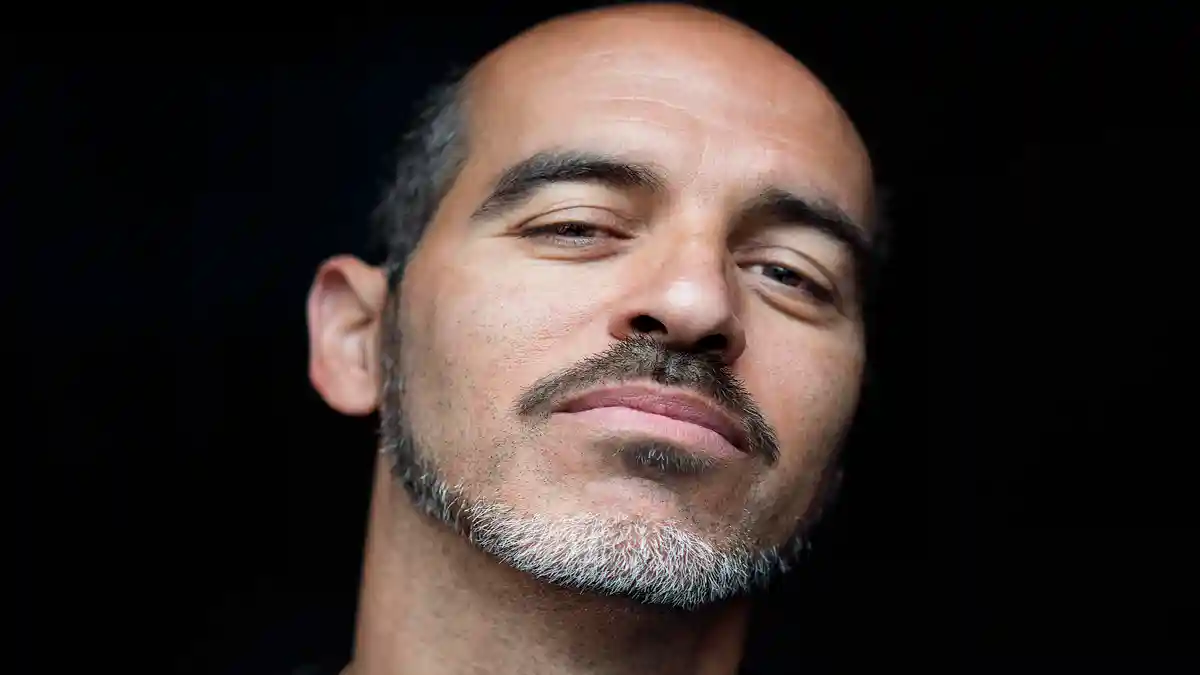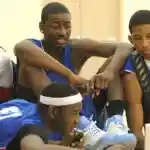By Justin Goodrum
With New York known for its rich fusion of Hip-Hop, basketball, and culture, tracking their shared history on the surface is a Herculean task. But for legendary New York DJ, streetball icon, filmmaker, and former radio host known for co-hosting “The Stretch Armstrong and Bobbito Show,” Bobbito García is the perfect candidate to eloquently connect the three worlds in his memoir, Bobbito’s Book of B-Ball Bong Bong!: A Memoir of Sports, Style, and Soul.
In his interview with the Hoopsology Podcast, he shared that writing his book became his favorite basketball memory, a reflection of his deep history with the game he grew up around in New York.

“So I think right now I’m just going to go with the process of authoring my memoir, might be my favorite memory because it was just a joy ride of pulling together photos, 35 millimeter archives of my own work from the past 30 years, as well as writing about my experiences, both on and off the court, with entry points of family and identity and upbringing in New York,” García told Ballislife. “But certainly, there’s a lot of history about the game outdoors on the asphalt and the five burrows and beyond.”
When readers pick up his book, they’ll discover how García’s journey—from co-hosting the legendary hip-hop radio show The Stretch Armstrong and Bobbito Show, to pioneering sneaker journalism, directing acclaimed documentaries, and hosting programs on ESPN and NBATV—shaped both his passion for basketball and his belief that New York has the most unique relationship with the sport of any city in the world.
“I’ve traveled to 47, maybe 48 countries around the world. People want to play at Rucker, West Fourth. There’s no other outdoor arena that’s as famous as those two. I mean, sure, Venice Beach and you got the beautiful court in Croatia, you know, by the castle and you got La Pella, Puerto Rico, you got, you know, Chicago and Detroit have history, but it just doesn’t add up to what the legacy that New York has created and proposed to the rest of the world and even to the NBA. The league has taken a lot of its cues from my city. We have informed the NBA in many ways, whether it’s been marketing, strategy, style, culture, all of it, the roots are right here.”
García’s book also dives into his experience as the voice of one of the most beloved video games ever, NBA Street Vol. 2. He reflects that he had no idea how much of an impact the game would have on the legacy of basketball culture and that he often has people calling him a “streetball legend.”
“I was the announcer of the game. And it was a joy ride again, because I didn’t even play video games, and I still don’t. I only played NBA Street Volume 2 once, and I got my ass busted by this 13-year-old kid who’s the son of my dear friend,” García said. “But I went into the studio to record, and I just infused all the essence and the ethos of what’s inside of my soul from having played ball since the ’70s and ’80s in New York. And that’s what makes that game so authentic.”
Even though he’s doesn’t play video games often, he’s diving back into the basketball gaming world with the new streetball game The Run: Got Next, developed by Play By Play Studios which is scheduled to be published in 2025 for Steam, Xbox Series X | S, PS5 which has him being the voice of the game and has members of the design team who worked on NBA Street Vol. 2.
Hip-Hop and basketball are often linked together throughout history, with notable basketball stars Shaquille O’Neal, Damian Lillard (“Dame D.O.L.L.A.”), and Lonzo Ball having released rap albums, while pop and rap artists consistently reference basketball culture in their lyrics. But García notes it was New York City that fueled the bond between hip-hop and basketball.
“With regards to the connection of hip hop and basketball, there are two separate movements,” García said. “But yes, they are extremely interconnected, and they both were birthed culturally here in New York. And in some cases, the same locations, you know, the park jams happened at the basketball court. Some of the indoor jams happened at gyms or, you know, rec centers where there were, you know, ball players and, you know, hip hop took a lot of its fashion cues when it came to footwear from basketball.”
He also notes that it’s important to remember that hip-hop and basketball have their own identities, even though they are closely linked together.
“But, you know, don’t get it twisted,” García said. “Like hip-hop is its own thing and basketball is its own thing. You know, people are like, oh, basketball is hip hop. Like, no, basketball existed for 80 years before hip hop was even a thought in someone’s head. But I love how they react to each other and how they play alongside of each other.”
When asked about the state of basketball culture, García believes that the rise of content creation has allowed fans to express their passion of basketball to new audiences and enjoy sharing the game that they love.
“There’s more opportunities to listen to people analyze the sport and the game than ever in history,” García said. “Think about December 21st, 1891, when basketball was born, to 2025, where there’s hundreds of podcasts. Hundreds. You have people that are just recording out of their bedroom with five listeners, but they’re having a ball expressing themselves. So I embrace that.”
Bobbito’s Book of B-Ball Bong Bong!: A Memoir of Sports, Style, and Soul is available now on Amazon or at your local bookstore.
Editor's Pick
 John Wall Retirement Signals End of “Mixtape” Era
John Wall Retirement Signals End of “Mixtape” Era